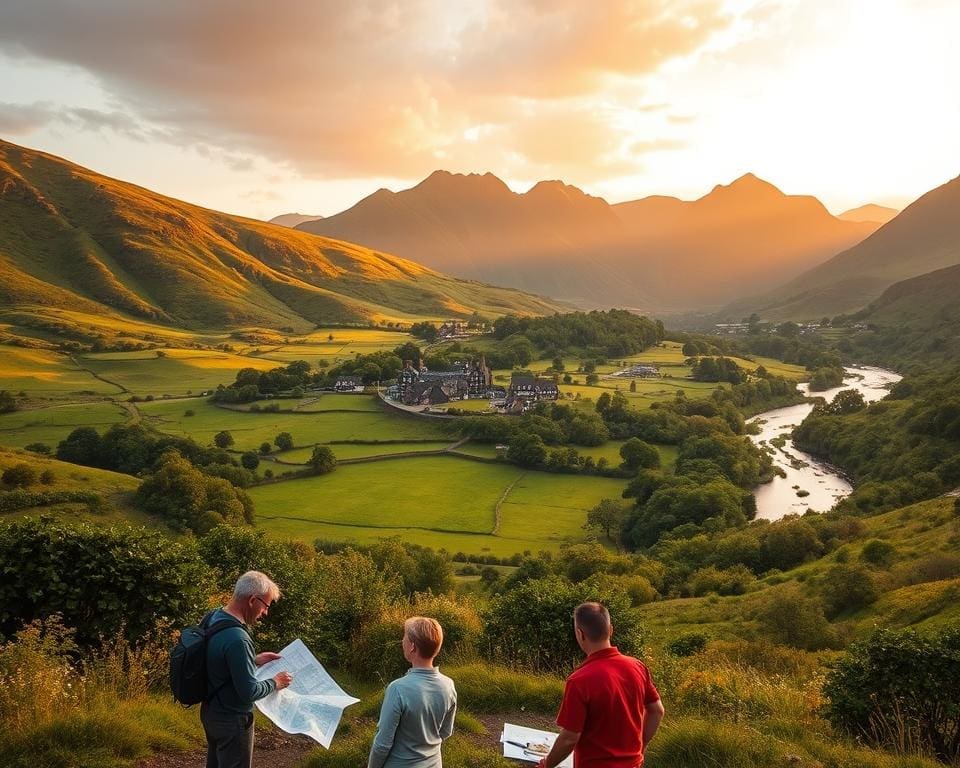Snowdonia, with its breathtaking landscapes and rich ecological heritage, is a region where the importance of restoration planning cannot be overstated. For those looking to embark on restoration projects, understanding how do you get planning for restoration in Snowdonia is crucial. This stunning area invites initiatives ranging from the restoration of historical sites to vital ecological rehabilitation, each demanding a meticulous planning application process. Securing planning permission for restoration projects in Snowdonia requires familiarity with local regulations and conservation objectives, ensuring that projects align with the area’s unique environmental ethos.
Understanding Restoration Planning in Snowdonia
Restoration planning in Snowdonia plays a pivotal role in preserving its unique landscapes and rich biodiversity. With a focus on ecological integrity, these efforts address the challenges posed by both natural forces and human activity. Emphasising the importance of restoration in Snowdonia, various initiatives seek to mitigate the detrimental impacts on the environment while reviving natural habitats and cultural sites.
The Importance of Restoration in Snowdonia
The importance of restoration in Snowdonia cannot be overstated. These initiatives ensure the sustainability of ecosystems, fostering biodiversity and enhancing the region’s natural charm. In addition to ecological benefits, restoration projects help in preserving cultural heritage, which holds significant value for local communities and visitors alike. Furthermore, these efforts contribute to mitigating climate change effects, promoting resilience in both natural and human systems.
Types of Restoration Projects
Snowdonia features a range of restoration projects designed to address specific environmental challenges. Common types of restoration projects Snowdonia include:
- Habitat restoration focuses on rejuvenating ecosystems by reintroducing native species and removing invasive counterparts.
- Landscape restoration aims to rehabilitate land affected by erosion, deforestation, or industrial activities, striving for natural beauty and functionality.
- Repair of historical sites acknowledges cultural significance, ensuring that important landmarks are preserved for future generations.

How do you get planning for restoration in Snowdonia?
In order to successfully navigate the complexities of obtaining planning for restoration in Snowdonia, applicants must first understand the Snowdonia planning permission requirements. These requirements often demand a comprehensive approach, emphasising both detailed documentation and stakeholder involvement. Focusing on grabbing the attention of local communities and relevant organisations plays a key role in enhancing the chances of approval for planning applications in Snowdonia.
Key Requirements for Planning Applications
The submission of planning applications in Snowdonia necessitates adherence to specific criteria. Key requirements generally include:
- Detailed project proposals outlining the restoration objectives.
- Environmental impact assessments that highlight potential effects on the local ecosystem.
- Visual representations of the proposed restoration efforts.
- Compliance with local planning regulations.
Identifying Stakeholders and Community Engagement
Engaging with various stakeholders is crucial in the planning process. Involvement of local communities, environmental groups, and heritage organisations enhances project visibility and support. This community engagement in restoration projects ensures that local perspectives are incorporated, fostering a sense of shared ownership among residents. Building these relationships can significantly impact the success of restoration initiatives, making it vital for applicants to prioritise outreach and communication throughout the planning process.
Snowdonia Planning Application Process
Understanding the Snowdonia planning application process is essential for those wishing to embark on restoration projects. The path to success involves a series of thoughtful steps, beginning with comprehensive initial research for planning application. This groundwork lays the foundation for a successful submission and ensures all necessary aspects are considered.
Initial Research and Preparation Steps
Before any formal documentation is created, conducting detailed initial research for planning application is paramount. Applicants should familiarise themselves with local planning regulations and environmental statutes. Consideration of historical site significance will further inform the application. Important tasks during this phase include:
- Reviewing local planning policies and relevant documents
- Identifying environmental constraints that may affect the project
- Engaging with local councils and communities to gather insights
Submitting Your Planning Application
After thorough preparation, the next phase involves submitting planning application Snowdonia. This step requires careful attention to detail, as applicants must compile all required documents and adhere to specified timelines. Key elements to consider during submission include:
- Ensuring all documentation is accurate and complete
- Understanding the submission deadlines set by the local planning authority
- Being prepared for potential follow-up questions or requests from planners
Snowdonia Conservation Planning Guidelines
Restoration projects in Snowdonia rely heavily on understanding and adhering to local conservation policies. These guidelines serve as the framework for ensuring that any development aligns with the region’s ecological priorities. Familiarising oneself with these policies is essential for any individual or group aiming to undertake restoration work.
Understanding Local Conservation Policies
Snowdonia is home to diverse ecosystems that require careful consideration during restoration planning. Local conservation policies outline the standards and practices necessary to protect these natural habitats. Applicants must consider aspects such as species preservation, habitat integrity, and community impact in their project proposals. Aligning with these policies not only reinforces community support but also enhances the sustainability of restoration efforts.
Integrating with Environmental Objectives
Successful Snowdonia conservation planning goes beyond mere compliance with local conservation policies; it involves a commitment to environmental objectives in restoration projects. Projects should aim to create a balance between development and ecological health, promoting biodiversity and protecting local wildlife. Implementing strategies that contribute to these objectives ensures that restoration projects benefit the environment while meeting community needs.
Steps for Planning Restoration in Snowdonia
Planning for restoration in Snowdonia necessitates a structured approach to ensure sustainable outcomes. Incorporating environmental assessments Snowdonia is essential for understanding the impact of proposed projects on local ecosystems. Gathering support for restoration projects can further enhance the viability and success of restoration efforts.
Conducting Environmental Assessments
Environmental assessments Snowdonia play a crucial role in the initial stages of any restoration project. These assessments evaluate the potential impacts on habitats, flora, and fauna, providing insights into necessary conservation measures. A thorough understanding of the environment helps in identifying risks and formulating effective mitigation strategies, ensuring the preservation of this stunning landscape.
Gathering Support and Documentation
Obtaining support for restoration projects requires collaboration with local communities, stakeholders, and environmental groups. Engaging these parties not only raises awareness about the project’s benefits but also fosters a sense of shared ownership over the restoration efforts. Documenting this support through letters of endorsement or community petitions can significantly strengthen planning applications, demonstrating a collective commitment to preserving Snowdonia’s natural heritage.
Common Challenges and Solutions in Restoration Planning
Restoration planning in Snowdonia often encounters a myriad of challenges that can impede progress. Bureaucratic hurdles, ecological sensitivity, and community opposition are prevalent issues that applicants must navigate. These challenges in restoration planning Snowdonia can lead to delays and frustrations, making it essential for planners to be proactive in their approach. Understanding the regulatory framework and anticipating potential obstacles is crucial in this delicate process.
To address these challenges, effective solutions for planning restoration projects are imperative. Proactive stakeholder engagement acts as a cornerstone for overcoming community resistance. By communicating transparently and involving the local community early in the planning phase, concerns can be addressed, fostering support for initiatives. Additionally, employing adaptive management practices allows for flexibility in project implementation, ensuring that ecological impacts are minimised while keeping stakeholders informed.
Continuous dialogue and collaboration with regulatory bodies and environmental agencies also play a vital role in successfully navigating the intricacies of restoration planning. By building a strong network of support and utilising available resources, applicants can turn challenges into opportunities, paving the way for successful restoration outcomes. This approach not only enhances the picturesque landscape of Snowdonia but also strengthens the connection between the community and its heritage.









